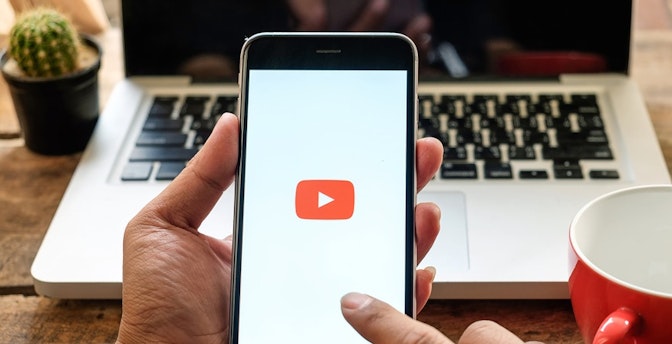When affiliate marketing was first introduced to digital audiences, it was easy to become a successful affiliate.
Any individual/company could create a website, post some affiliate links on the homepage and generate an income.
Today, it’s a whole different ballgame as everyone else seems to know the same methods, techniques, and strategies.
Fortunately, Internet is full of variety, and just because a lot of affiliates are doing things a certain way doesn’t mean it’s the only way.There are a variety of methods you can use when approaching the broad topic of how to do affiliate marketing.
It’s up to you to find what works best, then innovate and find new ways to sell.
David Zheng of WiseMerchant on how affiliate marketing methods have changed:

“Affiliates are notorious for doing quick short-term strategy. So to survive they need to start building assets like a real business. The only difference is that you don’t have to deal with products.
It’s getting harder and hard to do grey/black hat and spammy marketing strategies. So now you can cut less and less corners the more sophisticated different traffic platforms become.
In the future, I see people building more assets, such as email lists, or blogs, etc, rather than quick churn and burn strategies. Or else it won’t be sustainable to even get into affiliate marketing.”
So in this article, we’re going to dive into the specifics of how you can use a wide variety of methods to help you make money as an affiliate marketer.
You’ll learn how to do affiliate marketing with a blog, paid ads, Facebook, YouTube, and Instagram.
Let’s dive in, shall we?
Post Contents



1. Affiliate Marketing Blog
As we’ve seen throughout, an affiliate marketing blog is one of the best ways you can start taking steps toward your ultimate income goals. By building a website and publishing content, you’ll effectively be creating your own brand that can make money for years to come.
But learning how to do affiliate marketing with a blog requires you to understand online content creation at a deeper level. So I want to show you a tried and true technique that will help you find winning topics that generate traffic.
→ Click Here to Launch Your Online Business with Shopify
From there, we’ll look at ways you can convert your traffic into customers in a way that helps build your credibility and your revenue.
In essence, affiliate marketing blogs have two primary objectives:
- Gain traffic.
- Convert that traffic into customers.
If you are creating content focused around these two goals, you’ll be much more successful than simply going with your gut.
So to start things off, how do you create content that gains blog traffic? If you don’t already have an audience, this can be a huge struggle.
Thankfully, there’s a proven method called the skyscraper technique that can give you a shortcut. The technique is relatively simple, and consists of three steps:
- Find link-worthy content
- Make something even better
- Reach out to the right people
In one case, this technique doubled a blogger’s traffic in just two weeks. Bloggers and online brands around the world use it.
So if you’ve chosen your niche and determined some keywords, this is where you put that information to good use.
Let’s say, for example, that your chosen niche is helping people build websites. You’re selling a product like InstaPage 2.0 from ClickBank that provides users a drag and drop method for creating their site.
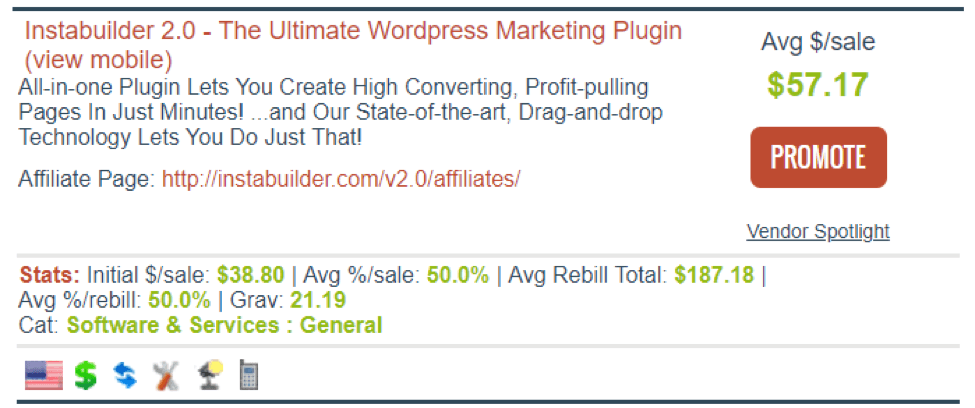
You’ve got your keywords, and have some ideas on what type of content you should create. But how do you find link-worthy content for this topic that helps you create something better?
The best place to start is the front page of Google because that’s what’s already getting traffic and links.
For example, if you Google ‘drag and drop website builder’, you’ll see two main results. First, you have other services that let users build a drag and drop website. Second, you’ll see links to articles that compare various services. You want to click on the articles to see what makes them worthy of the front page.
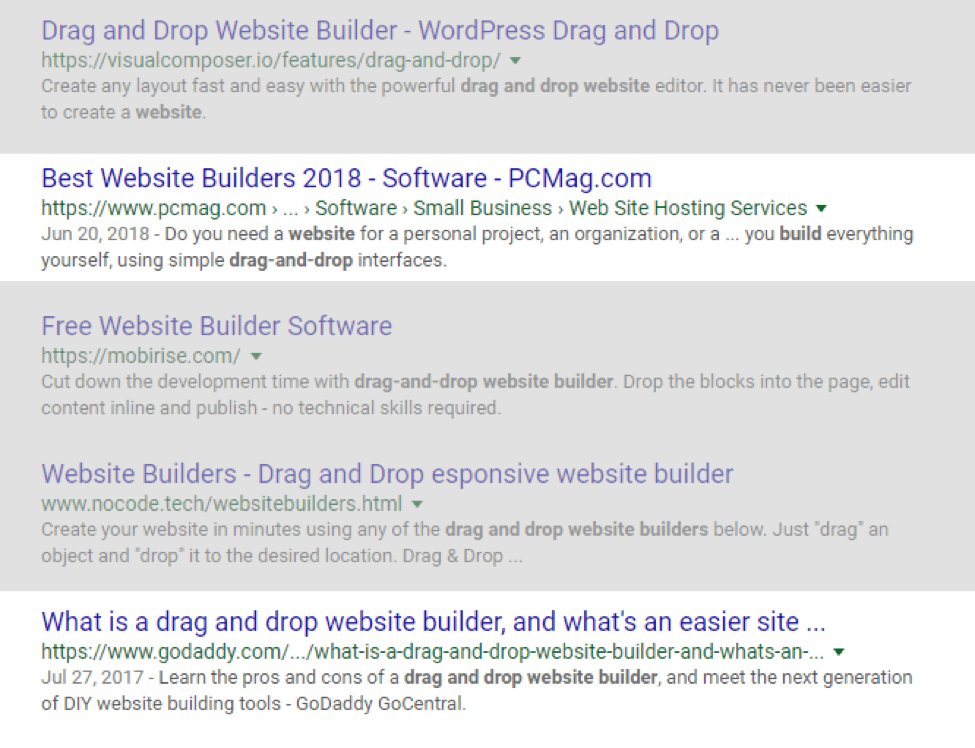
At the very least, this gives you a good idea of what type of content you’re up against should you make your own comparison blog post. You can input every keyword you’ve gathered in your research and click through to each article to see what they have to offer.
It’s also a good idea to start a spreadsheet that will help you easily reference your research when the time comes, like this:

This way, you have less to scroll through and can make additional notes on what you find.
But the front page of Google provides a limited picture of how effective content like this is. It’s a great place to start learning how to do affiliate marketing with a blog, but you need to dive deeper.
One alternative to the front page of Google would be a service like Buzzsumo. You can insert keywords or phrases and see engagement statistics for the best pieces of content in your niche.
Here’s what shows up when you insert the ‘drag and drop website builder’ search phrase here:
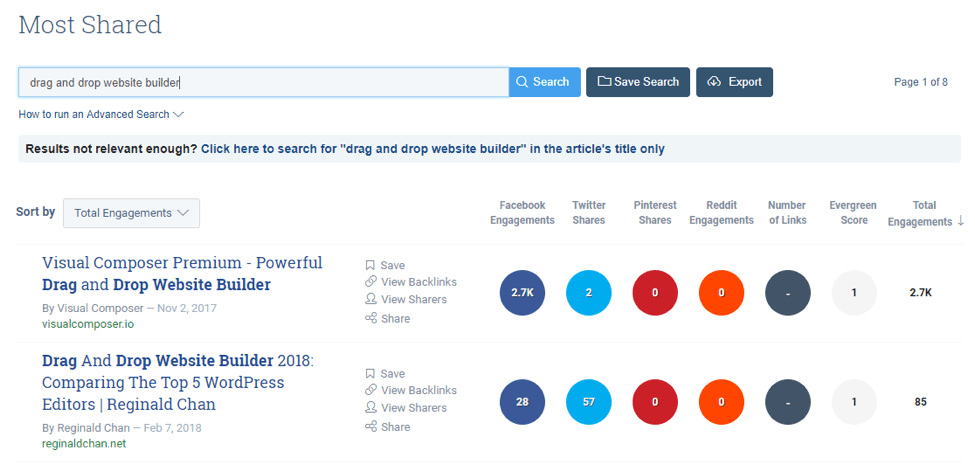
You see just how many engagements these pieces get across a wide variety of channels like Facebook, Twitter, or Pinterest. More importantly, you can see how much engagement they get overall, and it doesn’t look good for this topic.
The top article got barely above 2,000 clicks, whereas the second got only 85.
If you want a good article to improve upon, the top one is clearly the winner. Add it to your research, and then continue with the rest of your keywords you researched earlier.
Last but not least, you need to ensure that the pieces of content you find are truly representing all of the variety your niche has to offer. You can approach any niche you choose from a number of angles that can ultimately help you generate traffic as you master how to do affiliate marketing.
To do that, consider using a tool like SEMrush’s Topic Research tool to help see if you’ve missed anything.
When you input your keyword phrase, it suggests a wide variety of different topics that your keyword can fall under.
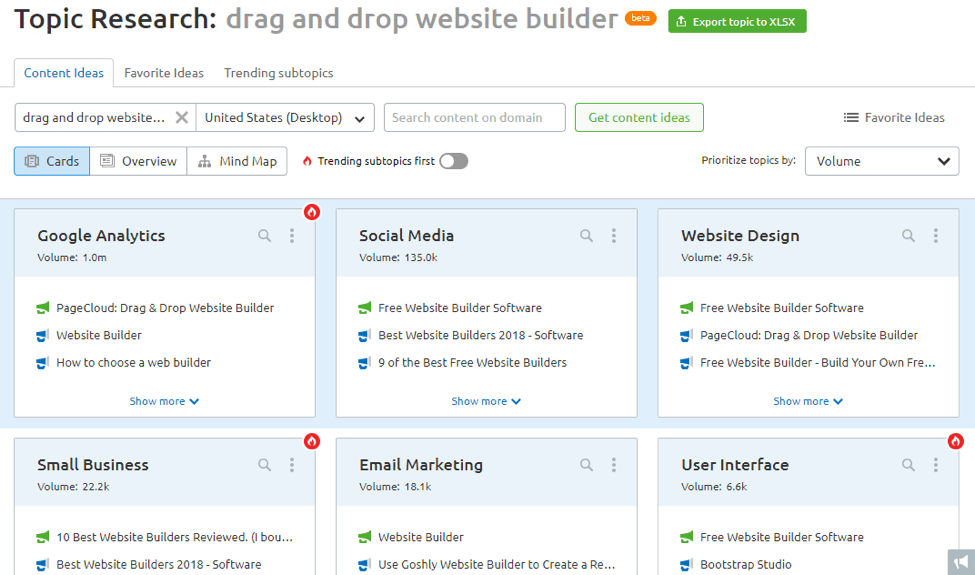
And even better, it gives you links to pages that are relevant to your search. Clicking on the ones that meet your topic and audience will navigate you to that page, which lets you continue your research.
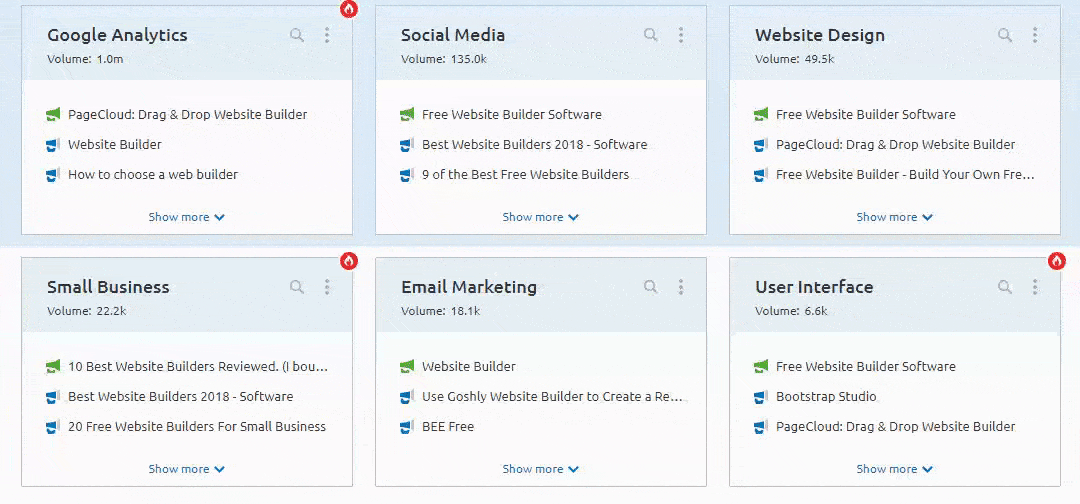
Once you’ve researched enough pieces to get an idea of what you’re up against, the next step is to recreate it as your own.
It should be said here that you should not plagiarize in any way.
Plagiarism is never okay, and it will ultimately undermine your site’s traffic, your credibility, and your relationship with merchants.
The key here is to take the ideas others have presented and shed new light on them. Provide visual examples, keep your data fresh and relevant, and link to sources that boost your credibility.
Your end product will very likely look nothing like the pieces you’ve pulled from, and that’s okay. As long as it’s shareworthy, it will generate traffic with time.
But generating traffic is only half the battle when learning how to do affiliate marketing. You’ve put in the time to research keywords, find content that works, and create something special, but how do you close the deal? That’s where you make money after all.
Closing this gap is probably one of the most blogged about issues on the Internet amongst marketers. As an affiliate marketer, the choice is yours how you want to do it. But the biggest takeaway is to go the extra mile with your content.
Brittany Berger of Work Brighter says this about going the extra mile with your content:

“With popular affiliate programs, you need to have a reason to buy through you instead of another affiliate. For example, in my niche, there are tons of affiliates for the same course launches and online business tools. Just promoting my affiliate link inside a blog post or on a resources page on my website, which are basic best practices for my competitors, isn’t going to be enough. Instead, I focus on marketing every program not only as seriously and consistently as I would my own product, but also on figuring out ways to make my offer unique from other affiliates.
For example, I’m an affiliate for a lot of popular programs around starting and growing my business. Many other affiliates for them offer bonuses for customers who buy through their affiliate link, but they’re usually just that person’s own products, regardless of how related it is to the main offer’s material. Instead, I host a group coaching/mastermind call for anyone who buys through my affiliate link. That way I’m not throwing them more content to consume, I’m helping them take action on the investment they just made.”
For example, here’s a list of ways you can potentially edge your audience closer to a purchase:
- Custom landing pages
- Downloadable materials
- Calls to action
- Opt-in forms or data collection forms
- Email campaigns
- Remarketing ads
- Recommend products in your content
- Keep creating interesting content
All of these methods engage with your audience and build interest in the products you’re selling over time.
Even simple efforts like an email campaign can be all you need to close thousands in sales.
For example, here’s a look at a creative email sent by the brand Cook Smarts.

It starts with a helpful weekly meal prep menu. Each contains a link to a grocery list, and even makes specific product recommendations that complete the recipes the best. It’s the perfect segue from helpful content to affiliate links.
The email goes on to give helpful tips for cooking the recipes, and then ends with this short invitation from the brand:

Without being pushy, the brand invites you to re-engage with them on Facebook and asks you to share the love with your family and friends. The unique combination of helpful content, appropriate linking, and personal connection has the potential to make this email incredibly effective.
By combining a tool like this email, or any of the other tools above, with your blog, you’ll be positioned to engage and sell more as you study how to do affiliate marketing with a blog.
It’s not an easy process, but an affiliate marketing blog can stand the test of time and help you make money if you take the right steps.
2. Paid Ad Affiliate Marketing
Affiliate marketing doesn’t require that you take the limelight. In fact, most affiliate marketers are probably not ever going to be the center of attention, and that’s okay. They still get paid, because they use paid ads.
But that doesn’t mean you can just sit back and relax. Hosting paid ads is a complex and time-consuming endeavor. They require experimentation. And from a merchant’s perspective, they want to know that the ads you run are both effective and on-message.
So in this part of the article, we’ll take a closer look at steps you can take that will accelerate your path when learning how to do affiliate marketing with paid ads.
Develop an Audience-First Approach
For those unfamiliar with paid ads and other paid media, the basics look pretty simple. A marketer puts up an ad, backs it with a budget, and users click if they’re interested.
But the reality isn’t that simple, especially the part about users being interested. While the ‘spray and pray’ mentality could work, it can also fall flat and fail to close any deals.
The solution then is to go with an audience-first approach from the start of your train on how to do affiliate marketing.
And to kick that process off, you need to learn as much as possible about your target audience.
Developing audience insights begins and ends with market research. To sum that process up, it means you need to find four essential points of information:
- Which products sell the best?
- What prices drive sales and profits?
- Where is the best placement for my ads?
- Are ads really the best way to sell in your scenario?
By conducting market research, you will be able to find products and craft ads that help you sell to online customers. Without the right data to base your decisions on, you’ll only be going on your gut when building an ad.
That isn’t likely to pan out.
Thankfully, there are numerous sources of information that are reasonably easy to access. Not all of them are free, but the price you may have to pay can be worth it once your ads are up and running.
Here are some sources to get you started:
| Site | Description |
| Pew Research Center | Data based off of public opinion polling. Good for discovering demographics and what types of media help sales |
| US Small Business Administration | Stats compiled by the US government about small organizations and their performance in a variety of industries. |
| IBIS World | Requires payment, but able to give you incredibly detailed insight into global industries. |
| Facebook Audience Insights | Free data from Facebook users’ public profiles that gives insight into shopping habits. |
| Statista | Paid or free statistics on worldwide digital consumer activities. |
| Consumer Barometer | Google’s offering to help businesses uncover how online buyers use the Internet. |
Once you’ve done your research on your target audience, the next step to learn how to do affiliate marketing with ads is to make a guide that will help you stay on-message at all times.
These guides are commonly called ‘customer personas’ or ‘buyer personas’. Here’s what one could look like:
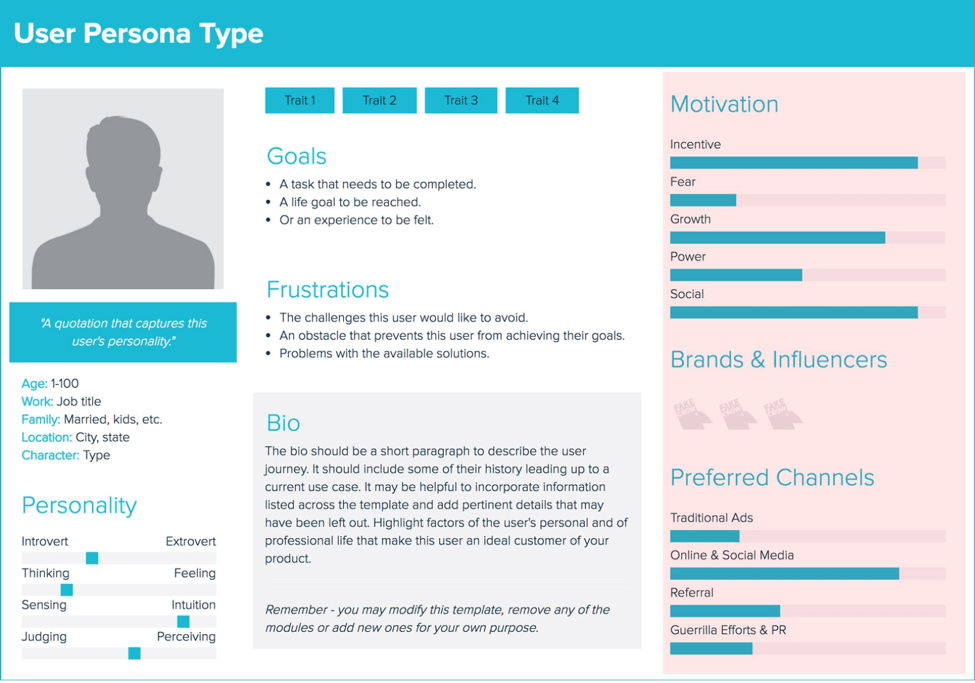
Of course, you don’t have to make it look pretty, but you should create something that helps you create ads that speak to your audience above all else.
That means making general bios, understanding your target audience’s customer journey, and finding out what their goals and needs are. Equipped with this information, you’ll be able to target your audience with pinpoint accuracy.
Experiment
The key to successful paid advertising is to simply experiment.
Within every ad, multiple variables are always at play. Your copy, images, links, and even the ad type or positioning can ultimately make or break your efforts.
While you can always see what everyone else is doing, the only way that you can truly improve is to experiment.
So when it comes time to experiment as you learn how to do affiliate marketing, what are your options?
The gold standard of online experimentation when it comes to paid ads is known as A/B testing. Below is a visual explanation from VWO.
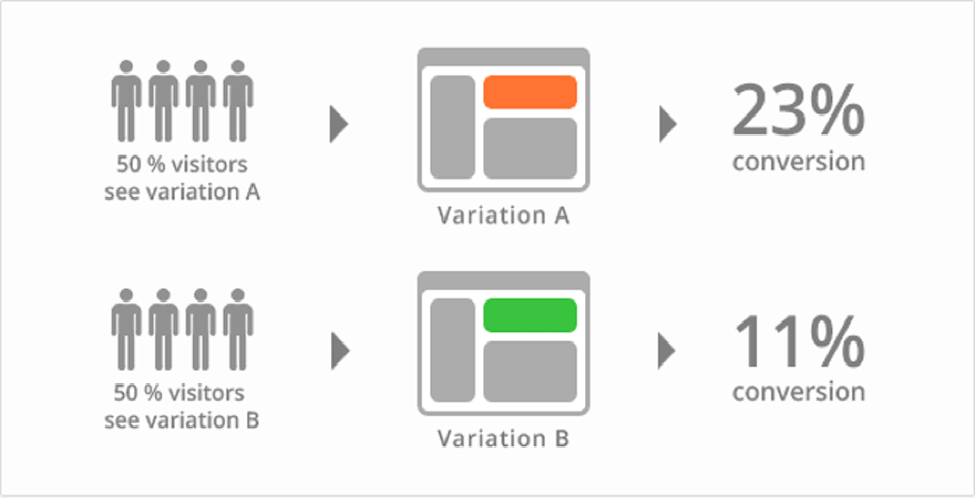
This is a method where you use a control ad and then change a single element on a duplicate. When running simultaneously, and for a long enough period, this will give you feedback on whether or not that one change made a positive or negative impact.
If positive, the idea is to keep the change and then build off it with another experiment. If negative, then you can move to another element to see if anything changes.
It’s also good to keep in mind that you’re still trying to build an audience with paid ads. While you may not take center stage, your merchant does. Just because you don’t have to deal with the audience in the long term doesn’t mean it’s not a consideration.
You still want to build an ad that provides a positive return on your investment and gives value to your customer.
3. Facebook Affiliate Marketing
Facebook has been the gold standard of social media for years, and it currently boasts more than 2.4 billion users worldwide. That means there’s a lot of potential to create a name for yourself by learning how to do affiliate marketing on this platform.
A big plus is that by participating in Facebook affiliate marketing, you won’t need to create a website or start a Google Ads account. You can start with a personal account, which you may already have.
And because Facebook is so popular, there’s a good bet that you can make money as a Facebook affiliate. In fact, Facebook, Instagram, and YouTube are consistently the highest ranked sites for affiliates and influencers in terms of profitability.
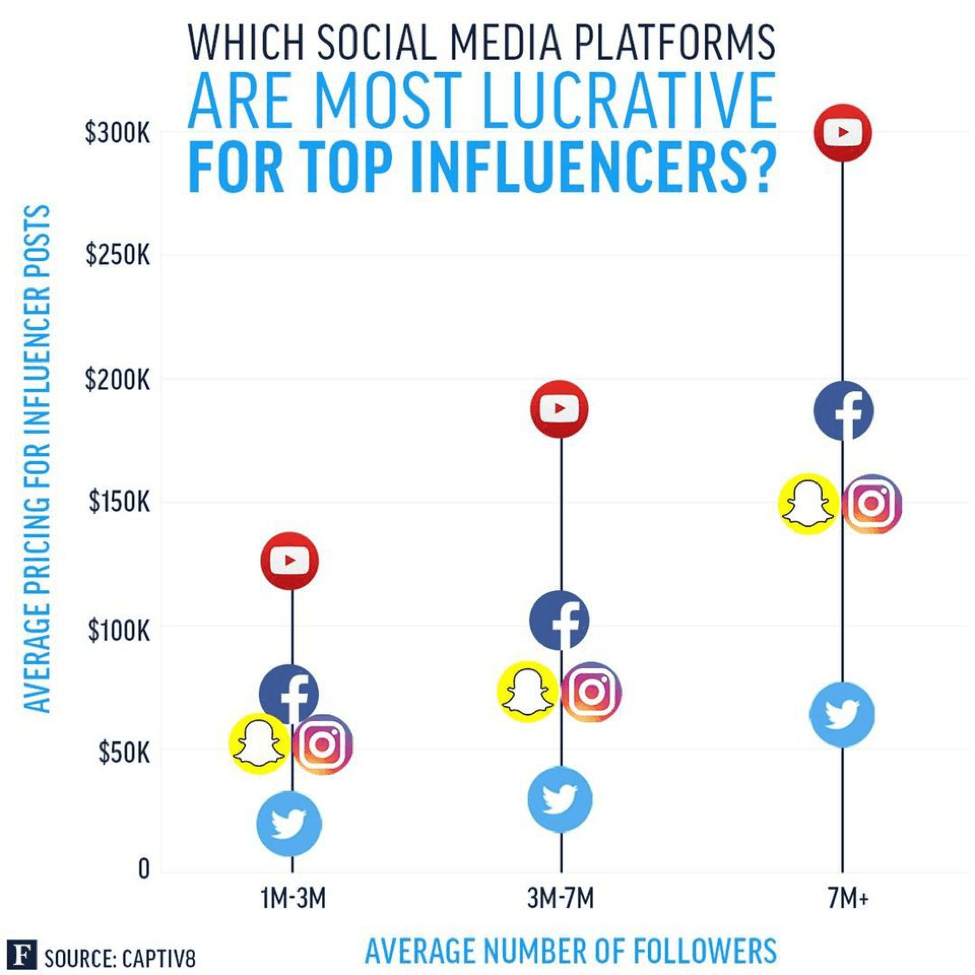
So what is your path to specialize with Facebook Affiliate Marketing? You actually have a number of options, starting with your very own personal profile.
Consider Starting With Your Personal Profile
If you don’t want to get complicated as you learn how to do affiliate marketing, you can start by just sharing posts on your personal page. All you need to do is find a product through your Affiliate Program, generate your affiliate link, and share it. It’s that easy.
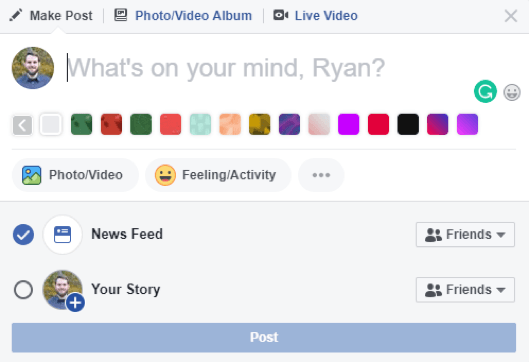
Keep in mind that just because it’s easy doesn’t mean it’s effective. If your personal page is mostly followed by people who already look to you for recommendations, then you may see success.
Chances are, your personal page is just that – personal. Your family and friends may not like being sold to, and there’s no good way to accurately track your performance.
If you decide to go this way, the best tactic is not to sell at all. Instead, share updates that somehow naturally incorporate the product.
While you may have to be careful with the wording, it’s possible this can help you get the knack of how to do affiliate marketing without much risk or time investment.
Try Creating a Facebook Group
The next best step to take with Facebook affiliate marketing is to create a dedicated group.
This method is similar to marketplace websites that post information about products or services with affiliate links, but it’s on Facebook.
Since Groups are opt-in, your audience will be more inclined to see what you’re posting and click on the links. When a sale is made, you get a commission.
Much like creating a website, you’ll want to start with your niche. You can’t just create a group that sells everything, so find a niche that allows you to recommend products with well-crafted posts. If the niche is right, you can resonate with your Group and sell more.
Starting a Group is easy, too. All you have to do is click on the top right drop-down menu of your personal account and click Create Group.
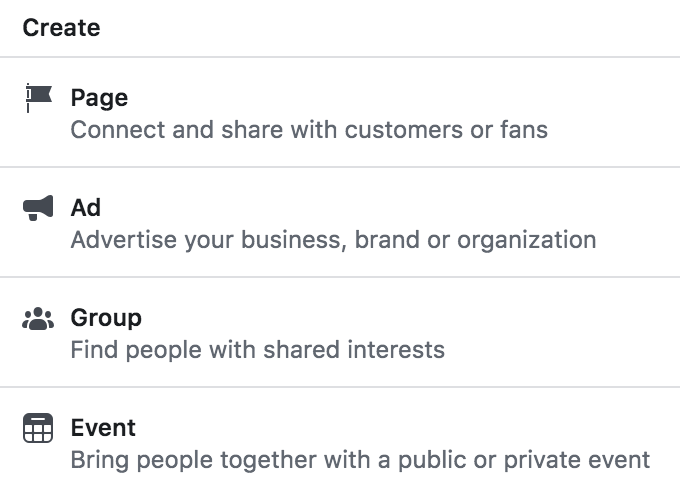
From there, you’ll be prompted to insert some basic information about your Group:
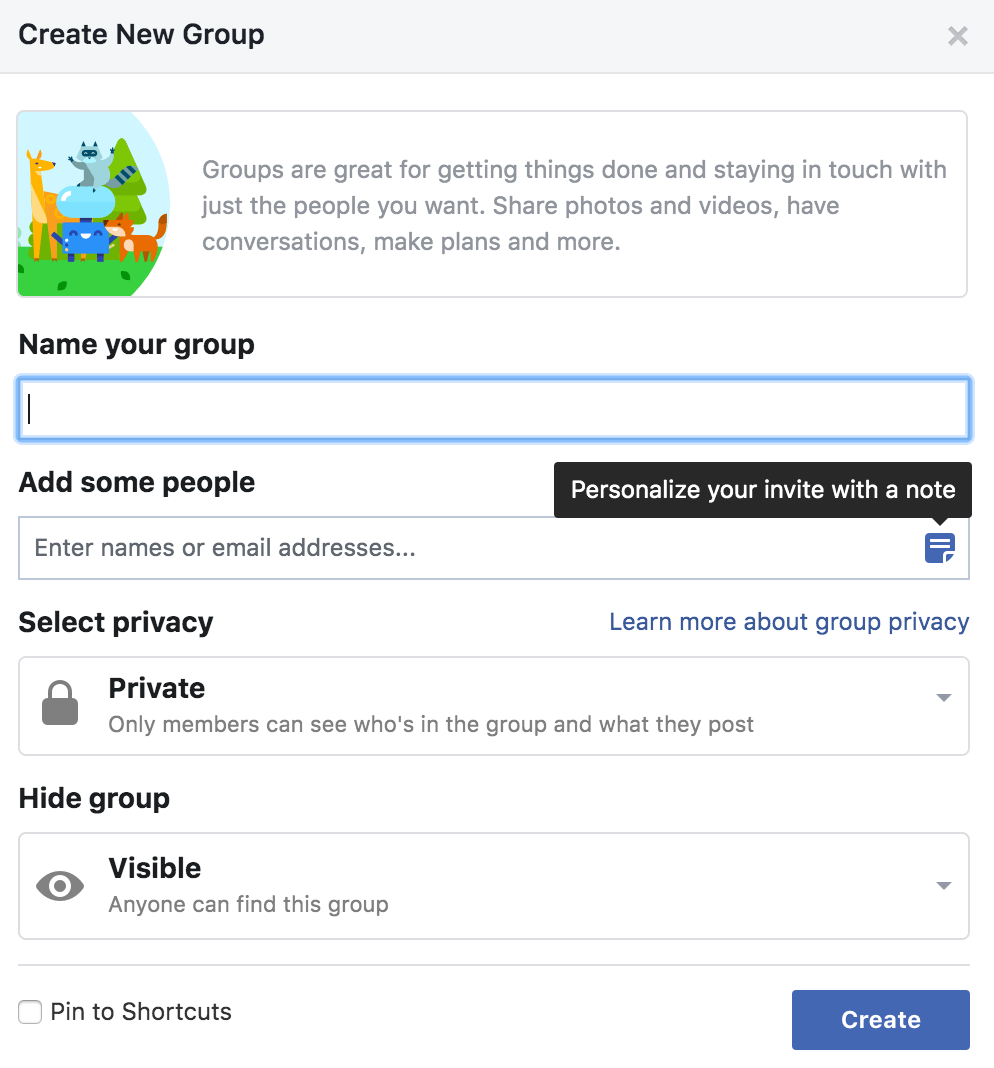
You’ll need to add some people to your Group to get started, and you’ll also need to decide how you want your Group to be set up. For example, closed Groups are findable, but you’ll have to moderate all of the requests to join. You’ll need to choose according to how much oversight you want to have.
And of course, you’ll need to take some time to make your Group’s page look nice. Create or find an image that you can add to the header, and then start posting relevant and conversation generating content immediately.
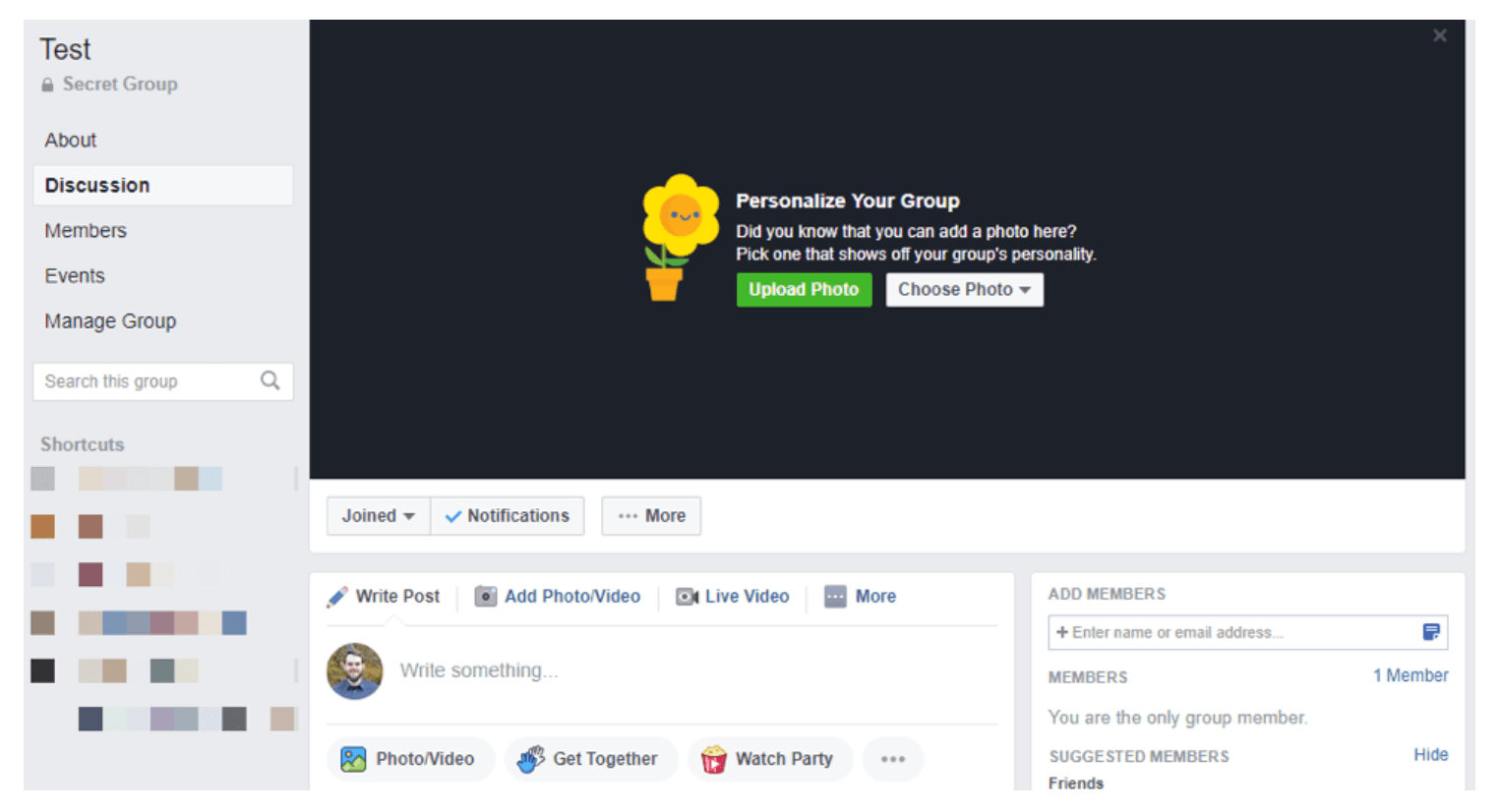
The beauty of Facebook Groups is that they have unlimited growth potential. It may start with a few of your friends who are interested in your niche but can grow as more and more users discover the Group.
A key point to remember is that you want to be engaging and build trust above all else. You may want to always provide affiliate links, but that can be seen as spammy. Curating helpful content is an integral part of this strategy that can pay off in the long run.
The Facebook Page Option
If you want to take the most official route with Facebook affiliate marketing, the best approach to take is to create a dedicated Facebook page that acts as your ‘brand’. This can also be paired with a website or blog to expand your horizons as you master how to do affiliate marketing.
Much like a Group, your goal should be to populate your Page with a mixture of helpful content and affiliate links that simultaneously engages and sells. You can truly be as unique as you want to be.
The process for starting a Page is very similar to creating a Group. Start in the same drop-down menu, but select the Create a Page option.
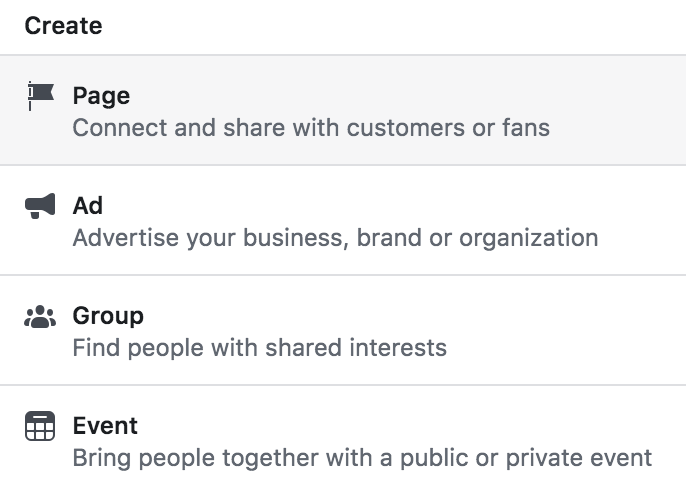
Next, you’ll need to decide if you want to build your Page as a business or a community. Each option has its unique perks.
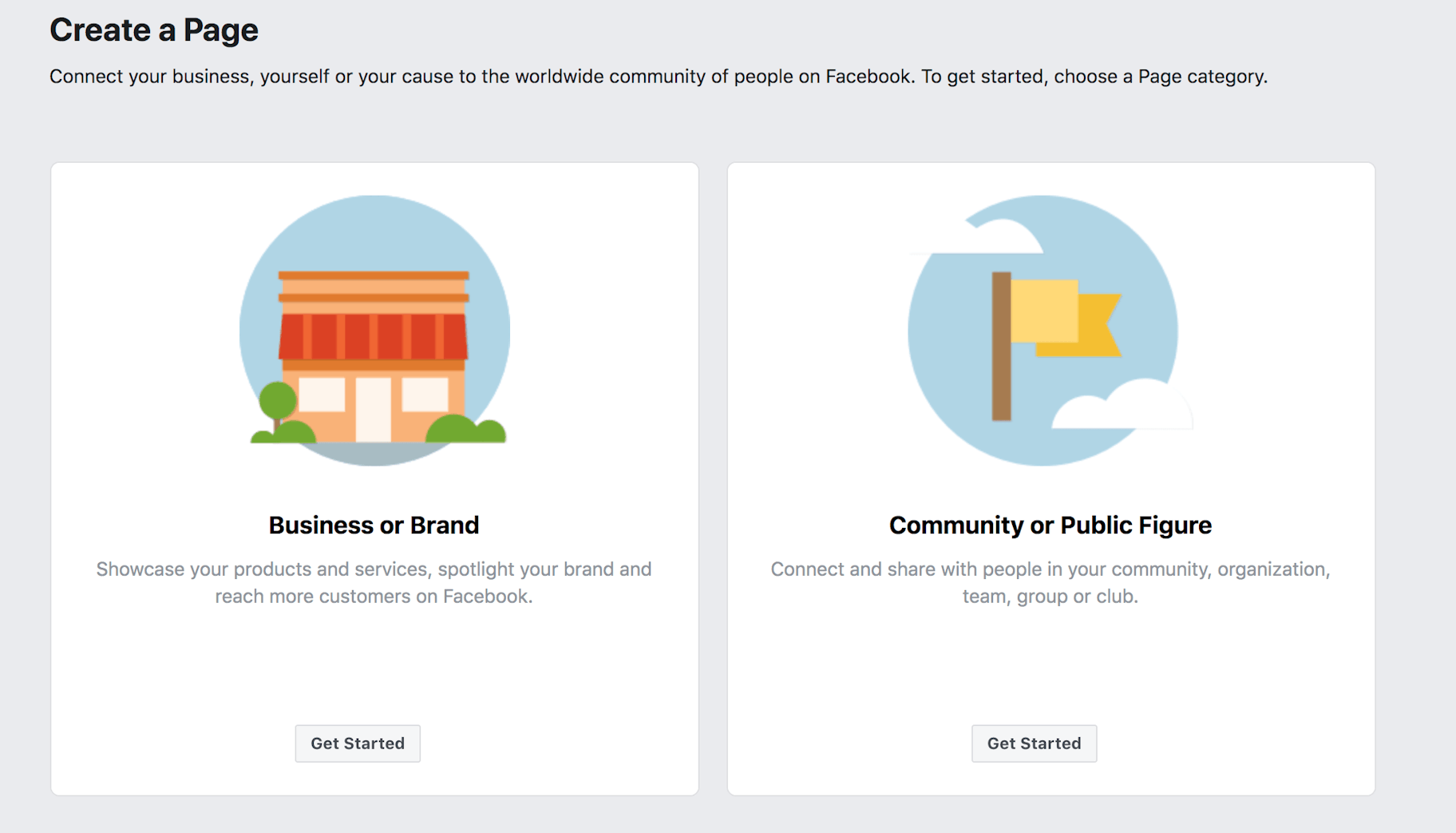
For example, Business Pages will allow you a better platform to display products that you’re selling. It’s a more direct indication of your objectives too, which can go a long way in building trust.
You can also have customers leave reviews, which may, in turn, bring in more business.
But the downside of a Business Page is that it can be challenging to build a brand that’s merely pushing customers to other brands. It can be confusing and may turn people off from what you have to say.
On the other hand, a Community Page can fix that problem by taking a more direct approach to your affiliate status. You can act as an influencer instead of a business.
Whichever option you choose depends on how you want to approach selling to your audience.
And of course, don’t forget to add a good profile picture, cover photo, and helpful information about what users can expect from your Page.
Pages are better used to keep your audience updated about what you’re doing or keep them in the know about the latest trends.
As long as you post engaging content and remember to push your affiliate links, then you can keep them engaged and have the opportunity to sell.
4. YouTube Affiliate Marketing
There’s a good chance that as you’re reading this, people around the world are viewing hundreds of hours of video.
In fact, more than a billion hours are watched each day on YouTube, which is a staggering figure.
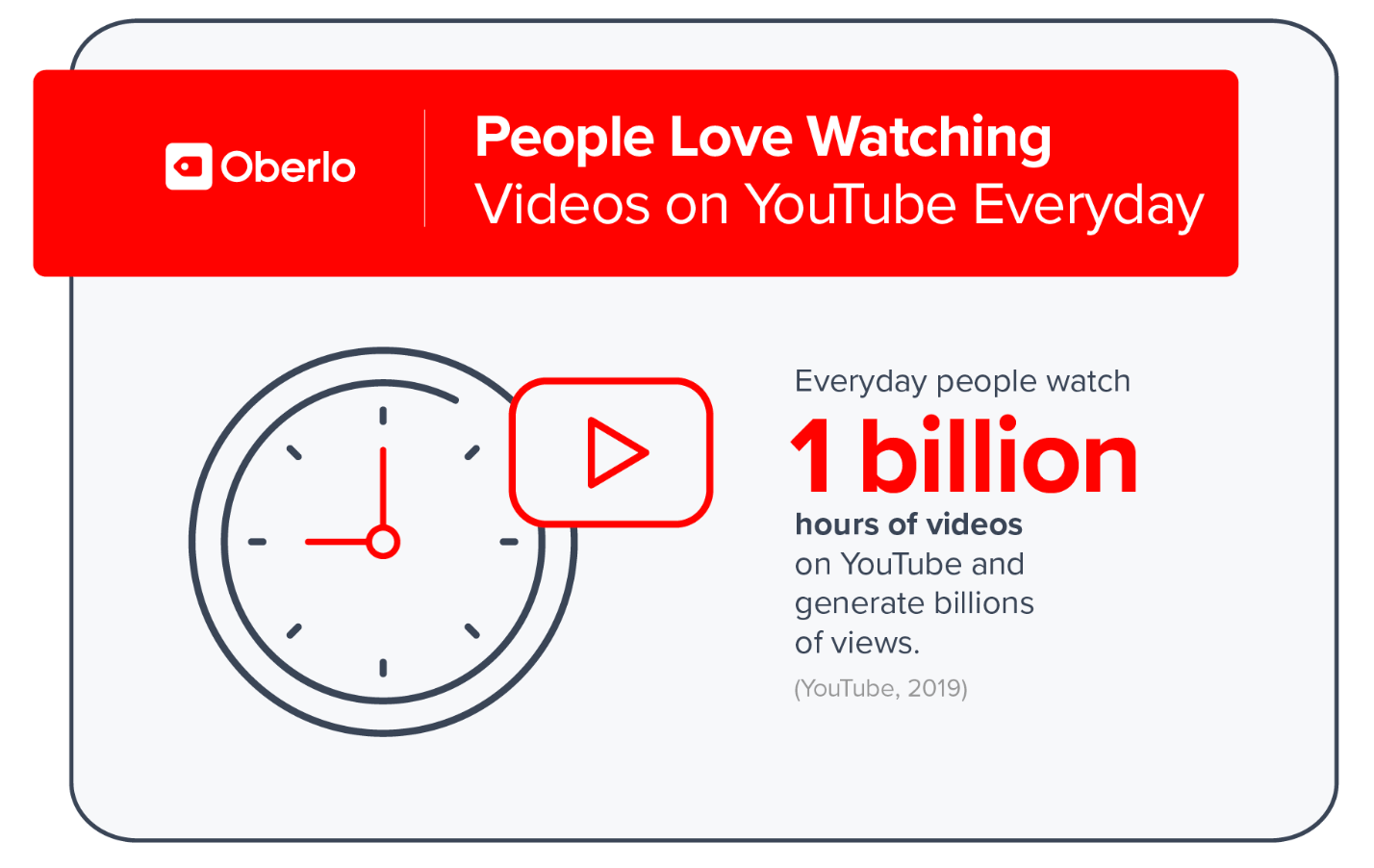
And when you add on the fact that YouTube is the second largest search engine on the Internet, you start to see a fairly compelling case for how affiliate marketers can use it.
So, let’s look at some ways you can learn how to do affiliate marketing with YouTube.
When you think about YouTube, it’s likely that you think about creating a channel that gets tons of views. But that’s not the only way to make money from YouTube.
YouTube affiliate marketing isn’t a new idea, and there are three simple but effective ways that you can create affiliate marketing content for your YouTube channel.
All you need is a channel, content, and an affiliate marketing link.
When considering how to do affiliate marketing on YouTube, the most common method is to simply include links to recommended products in the description of your video.
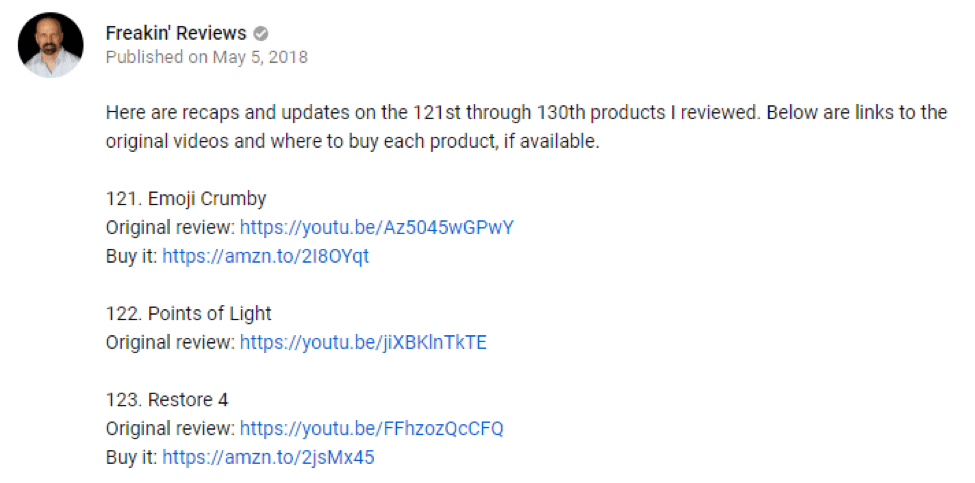
Another method you can use is to put the link in the video itself via annotations or overlays.
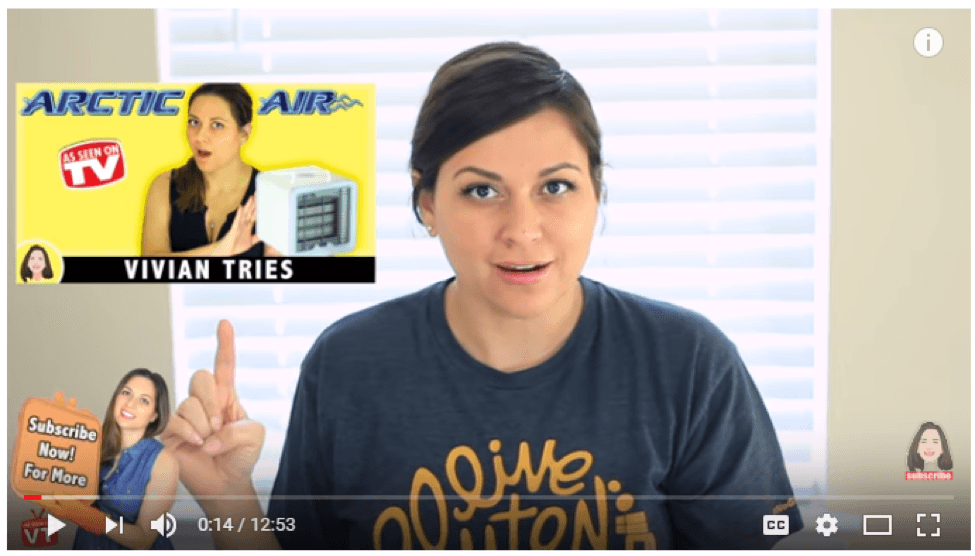
And last but not least, you should always insert a vocal call to action in your video if at all possible. If you don’t tell your viewer that it’s in the description or what the URL is, they may never find it.
Alternatively, you can also use the email collection ideas from the affiliate marketing blog section as a lead capture tool as well. The idea is practically the same only you’re using a video instead of a blog post.
And speaking of blog posts, the process for creating a YouTube video is fairly similar to that as well.
You want to find a topic that’s interesting, helpful, and is capable of driving a lot of views. In fact, you can use the same method discussed in that section, the skyscraper technique, to try to edge out your competition on YouTube.
In particular, there are three reliable types of content that you can use as you approach how to do affiliate marketing on YouTube. Let’s take a look at what they are and how to create them.
Product Videos
A product video is relatively straightforward, but there are a few ways you can go about it. Either you can review a single product in your niche, or you can compare and contrast multiple products.
In fact, some channels are completely built on product videos and affiliate selling, like the popular Freakin’ Reviews channel.
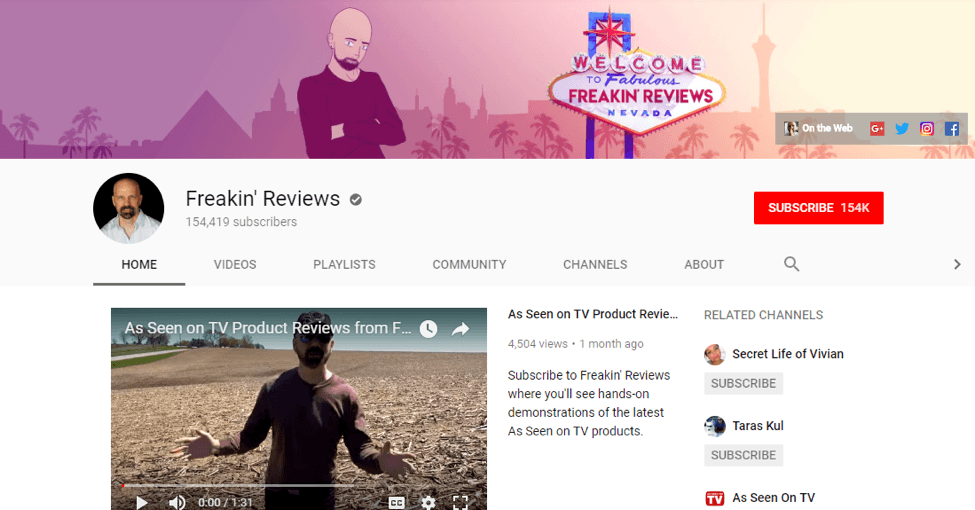
Research has shown that more than half of customers are more likely to buy a product featured in a YouTube video, so you know this method is tried and true.
And since you’re selling a product, this is a great way to feature it without being too sales-y. You can honestly point out the benefits and flaws of your product, give a straightforward opinion, and then tell your viewers to click your affiliate link if they want to buy it.
Here’s an example from the Freakin’ Reviews channel that features reviews of 10 different products.
Each product is given a fair review, and a link is provided just below the video if users are interested in buying one for themselves.
When done correctly, you can earn some good commission without alienating anyone as you master how to do affiliate marketing
How-to Videos
Another good option for those considering how to do affiliate marketing on YouTube is to create a how-to video.
Just like videos where the YouTuber reviews a certain product, there are plenty of how-to channels built specifically as YouTube affiliate marketing efforts. A good example is the DSLRguide channel.
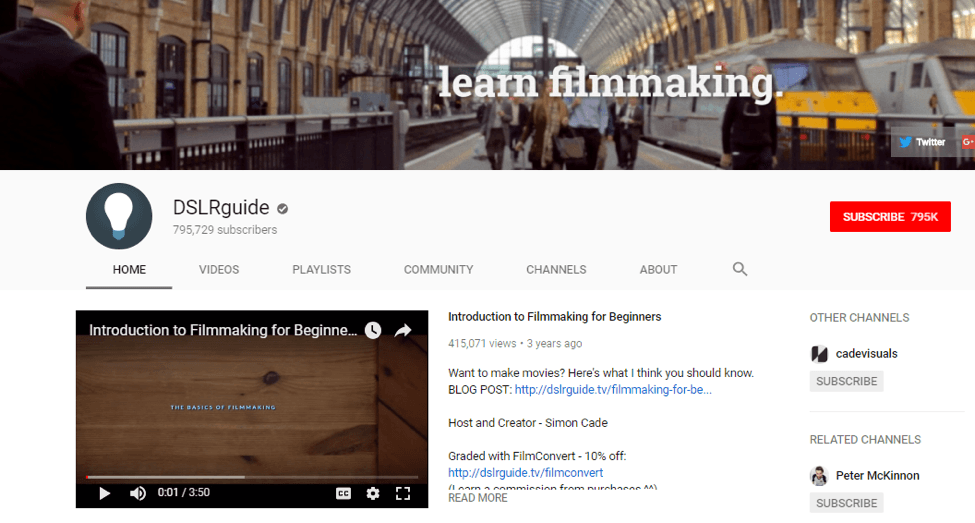
The entire purpose is to help photography and videography newcomers and veterans learn more about their equipment. There are dozens of guides for every aspect of a DSLR camera.
At some point in time, someone in your audience is going to need to know how to complete a task that requires your product.
In those cases, the perfect how-to video can be wildly effective.
The goal is to keep your videos as informative as possible. By showing your user how to use the product, you guide them through the buying process. It’s the perfect blend of informative content creation and sales.
Here’s a good example from the DSLRguide channel that teaches viewers more about creating their own high-quality videos.
And of course, this style of video again makes it easy to put a link in your video or description that prompts a sale. That makes it a perfect addition to your YouTube affiliate marketing toolkit.
Unboxing Videos
While it may feel strange at first, there’s something alluring about watching someone open a box with the hopes that the product inside will be a good one. That makes unboxing videos a perfect tool as you learn how to do affiliate marketing.
In fact, this particular unboxing video has more than two million views.
It’s once again a great way to subtly draw interest in a product that you’re selling as an affiliate. You can unbox the product, give a short review, and then push people toward your affiliate link.
No matter what type of video you create, you’ll want to make sure that your approach to YouTube affiliate marketing is balanced.
Serious content creators usually pick a niche and try to provide as much value as possible. Unfortunately, not all content creators are serious.
For instance, you probably don’t want your channel to look like this:

All of these videos are affiliate videos, but they’re too obvious. In fact, they’re basically spam and will likely get flagged by YouTube.
But more importantly, this doesn’t do you much good for creating a brand for yourself. All marketing is built on trust, and YouTube affiliate marketing is no different.
Focus on creating good content, then find ways to include your affiliate links. You’ll see much more success, and your audience will be much more profitable in the long run.
5. Instagram Affiliate Marketing
As of June 2018, 1 billion people have signed up to Instagram and 500 million of them are using the platform on a daily basis.
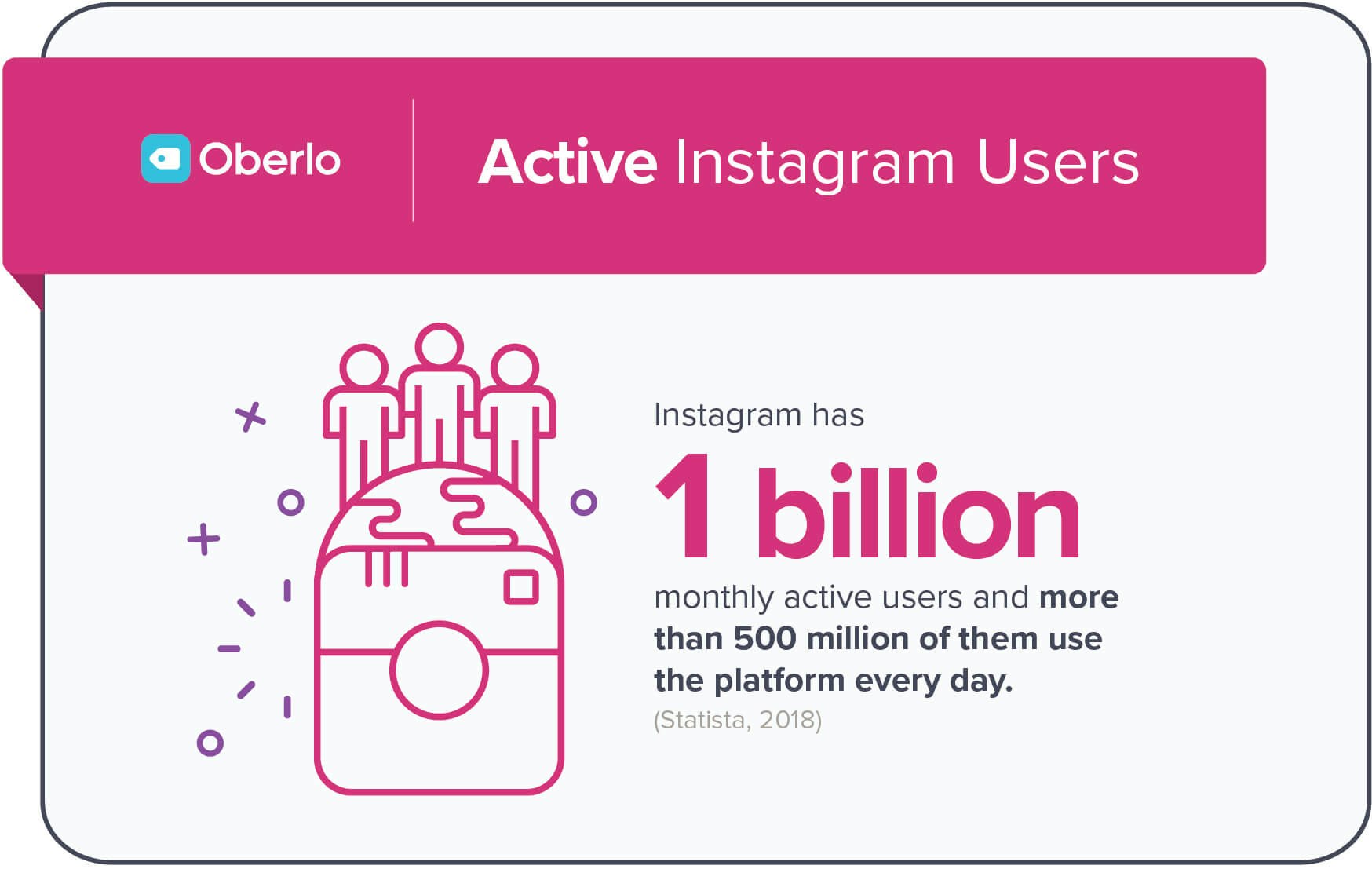
So it’s no surprise that marketers and advertisers are flocking to Instagram to sell their products. That’s why learning how to do affiliate marketing on Instagram can be an incredibly valuable tool in your repertoire.
When you think about how Instagram works, brands using an affiliate marketer (or influencer) instead of a paid ad makes sense. It’s easy to scroll past an ad that you know is trying to sell you something, but that’s not always the case when an influencer or affiliate posts something similar.
As we’ve seen with the other methods, Instagram relies on the trust built between the user and seller in order to make everything work.
And since Instagram is the preferred method for brand-influencer collaboration, it’s an excellent choice for newcomers who want to learn how to do affiliate marketing.
And when you consider the fact that Instagram’s influencer industry is currently worth more than a billion dollars, it’s even easier to see why Instagram affiliate marketing is worth taking a closer look at. Especially since almost 94% of marketers find Instagram to be effective.
So in sum, you should definitely consider Instagram affiliate marketing.
But how does it work? Let’s look at that.
Stick to Your Niche
Once again, it’s important to point out that effectively learning how to do affiliate marketing rises and falls on building trust and providing value. Your goal is to pick a niche and engage an audience in a way that makes them want to hear what you have to say.
On Instagram, this can make you more trusted than your favorite celebrity. And more importantly, it can help you sell your merchant’s products.
If you’ve done your research before stepping into your role as an affiliate marketer, then you’ll likely know what types of products you’re able to promote in your niche. For example, a high adventure Instagram influencer isn’t likely to peddle baby food. They’ll probably show off a backpack, tent, or hiking boots instead.
Aim for 2,000 to 10,000 Followers
At first glance, these numbers might sound a little arbitrary. Why do you need thousands of followers?
For one thing, part of Instagram affiliate marketing is attracting the merchant you want to sell for. To do that effectively, you’ll need to qualify as a ‘micro-influencer’.
Micro-influencers are often just affiliate marketers who have an audience that’s big enough for brands to make a decent profit from. A study showed that Instagram users with followers between 2,000 and 10,000 have the highest overall engagement rates.
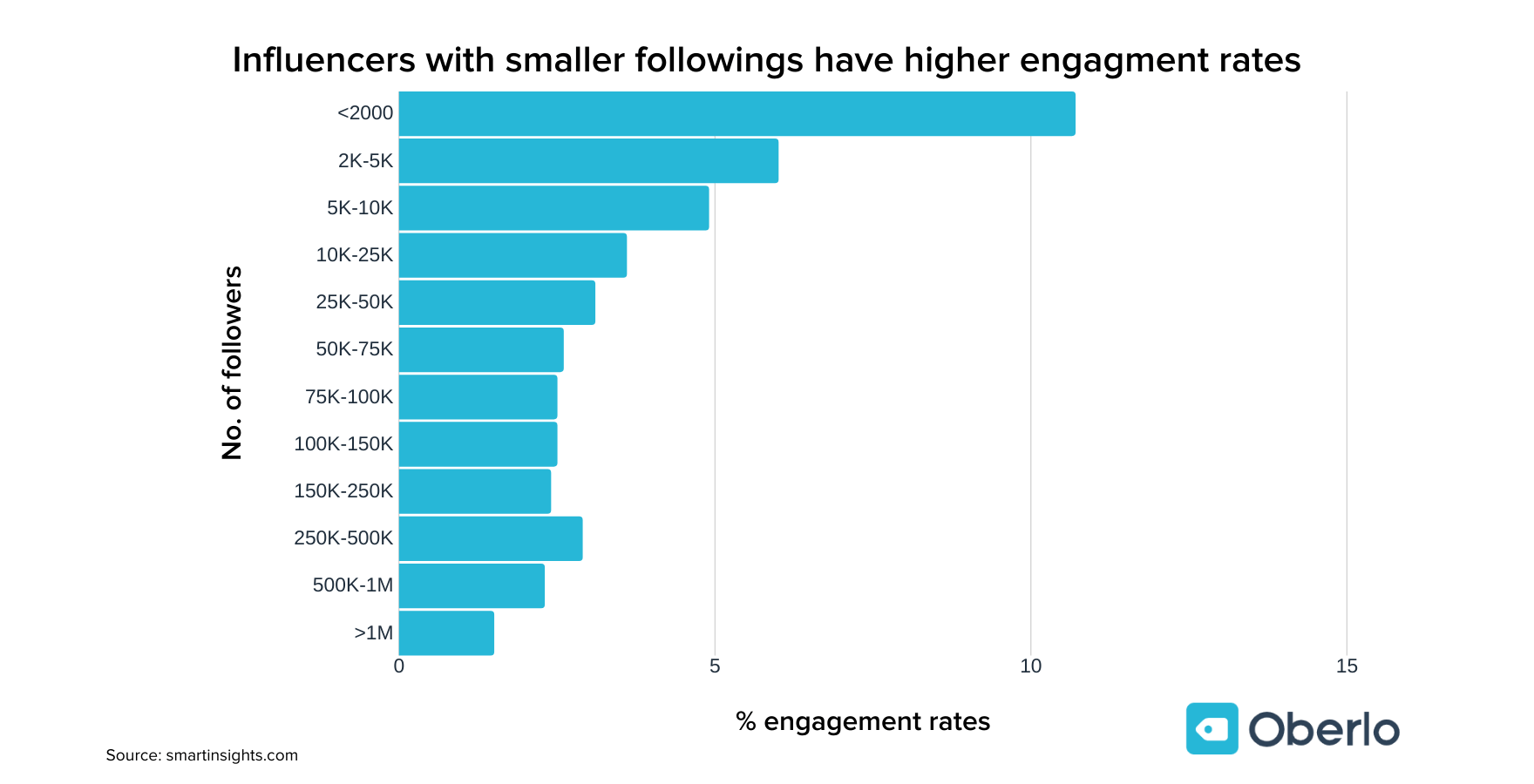
That means your goal, initially, is to hit this sweet spot.
But that’s easier said than done. How do you get more followers when you’re starting out?
The best answer is to focus on creating good, niche-specific content. You’ll want to make sure that the five core elements of each post are intact before all else:
- High-quality visuals
- An interesting caption
- Relevant hashtags
- Community oriented
- Fits the window or time allotment
That means if you have to, investing in camera equipment or a professional picture taking course could be a wise investment.
At the very least, give yourself plenty of time to practice and experiment with the elements you’re less comfortable with. Over time, you’ll improve and be able to gain more followers.
And even though it may be tempting, never buy followers. You might be tempted to think that a quick 1,000 followers wouldn’t hurt, but studies have shown that this will immediately hurt your engagement. Get your followers the old-fashioned way.
Curate Feeds That People and Brands Want to See
Once you’ve built up a following, your next step is to stay consistent while you master how to do affiliate marketing. Over time, your Instagram feed will start to fill, and you’ll be able to have a distinct Instagram brand that your users can rely on.
For example, here’s the feed on an Instagrammer who uses the popular ‘bullet journal’ to help him with daily tasks, schoolwork, and just life in general:

You might not have ever thought that a journal could look that good, but that’s the point. With time and attention to detail, any niche can have a standout feed that looks like the one above.
And when you have a standout feed, brands will be more inclined to approach you. You can still look for affiliate offers in your niche, but the conversation can eventually become a two-way street if you’re patient.
By providing a real feed that’s engaging to real people, you’ll be setting yourself and your merchant partners up for success.
The other side of the coin here is that you may not want to work with certain brands because you feel it compromises your authenticity. Selling the right product is just as important as having a good looking feed.
Be Active, Consistent, and Don’t Forget Your Affiliate Link
Success with Instagram affiliate marketing doesn’t happen overnight. You need to post consistently, build your audience, and work hard to make sure that everything comes together as you determine how to do affiliate marketing for you niche.
With time and experimentation, you’ll learn the best ways to engage with your audience. But until then, consider utilizing tools like this engagement heatmap to help you find the best days and times to post for your audience.
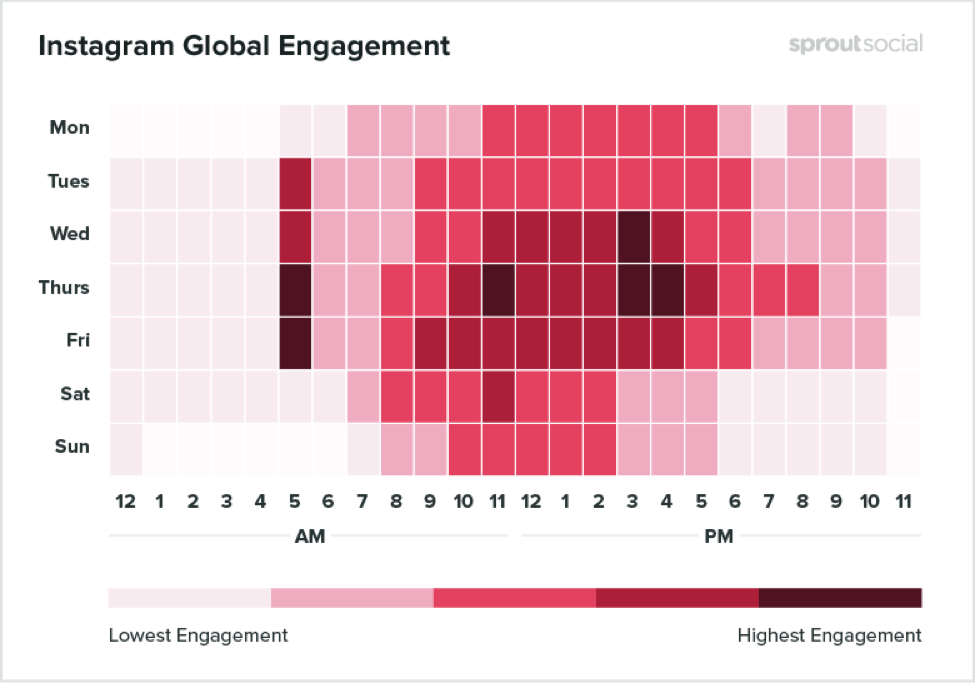
By posting at the right time, you’ll be better situated to engage and sell more to your audience.
And of course, don’t forget to drive your audience toward your affiliate products with an appropriate affiliate link.
Conclusion
No matter which affiliate marketing method you choose, the emphasis is always on providing value to your potential customer.
You have to make people trust you enough to click your ad, link, or blog post. Then, you have to follow up with a value that prompts your audience to act further.
If you keep an open mind towards the unconventional affiliate methods and stay up-to-date with the latest trends, you’re going to see start seeing returns on your investments and do affiliate marketing that your audience will love.
What’s your favorite way to do affiliate marketing? Let us know by leaving a comment below.





